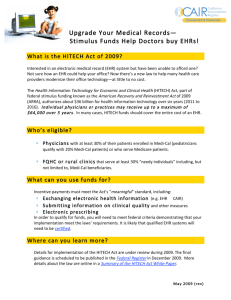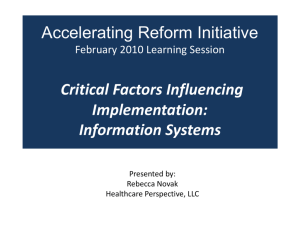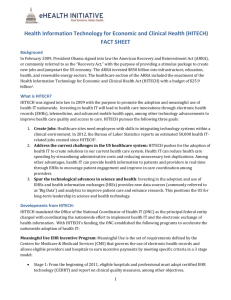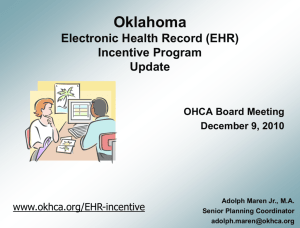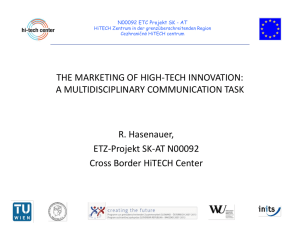Quality Measurement Reporting and Improvement doc
advertisement
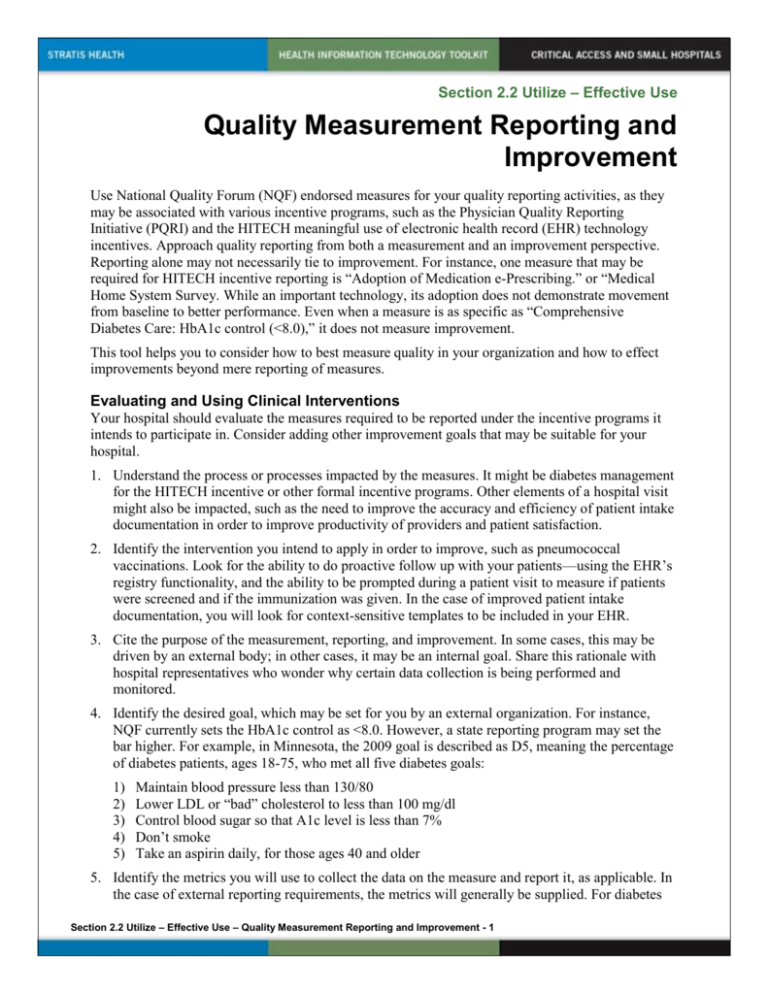
Section 2.2 Utilize – Effective Use Quality Measurement Reporting and Improvement Use National Quality Forum (NQF) endorsed measures for your quality reporting activities, as they may be associated with various incentive programs, such as the Physician Quality Reporting Initiative (PQRI) and the HITECH meaningful use of electronic health record (EHR) technology incentives. Approach quality reporting from both a measurement and an improvement perspective. Reporting alone may not necessarily tie to improvement. For instance, one measure that may be required for HITECH incentive reporting is “Adoption of Medication e-Prescribing.” or “Medical Home System Survey. While an important technology, its adoption does not demonstrate movement from baseline to better performance. Even when a measure is as specific as “Comprehensive Diabetes Care: HbA1c control (<8.0),” it does not measure improvement. This tool helps you to consider how to best measure quality in your organization and how to effect improvements beyond mere reporting of measures. Evaluating and Using Clinical Interventions Your hospital should evaluate the measures required to be reported under the incentive programs it intends to participate in. Consider adding other improvement goals that may be suitable for your hospital. 1. Understand the process or processes impacted by the measures. It might be diabetes management for the HITECH incentive or other formal incentive programs. Other elements of a hospital visit might also be impacted, such as the need to improve the accuracy and efficiency of patient intake documentation in order to improve productivity of providers and patient satisfaction. 2. Identify the intervention you intend to apply in order to improve, such as pneumococcal vaccinations. Look for the ability to do proactive follow up with your patients—using the EHR’s registry functionality, and the ability to be prompted during a patient visit to measure if patients were screened and if the immunization was given. In the case of improved patient intake documentation, you will look for context-sensitive templates to be included in your EHR. 3. Cite the purpose of the measurement, reporting, and improvement. In some cases, this may be driven by an external body; in other cases, it may be an internal goal. Share this rationale with hospital representatives who wonder why certain data collection is being performed and monitored. 4. Identify the desired goal, which may be set for you by an external organization. For instance, NQF currently sets the HbA1c control as <8.0. However, a state reporting program may set the bar higher. For example, in Minnesota, the 2009 goal is described as D5, meaning the percentage of diabetes patients, ages 18-75, who met all five diabetes goals: 1) 2) 3) 4) 5) Maintain blood pressure less than 130/80 Lower LDL or “bad” cholesterol to less than 100 mg/dl Control blood sugar so that A1c level is less than 7% Don’t smoke Take an aspirin daily, for those ages 40 and older 5. Identify the metrics you will use to collect the data on the measure and report it, as applicable. In the case of external reporting requirements, the metrics will generally be supplied. For diabetes Section 2.2 Utilize – Effective Use – Quality Measurement Reporting and Improvement - 1 management, the value of the patient’s A1c is a key metric. For the patient intake documentation example, the number of entries missed on an audit and the number of procedures having to be repeated—identified on processing mapping—may be the metrics. 6. Monitor and record improvement with the intervention you are using. Determine the timeframe in which you will measure for improvement and document results. If you are meeting your target goals, celebrate success and monitor to ensure you sustain the desired level or to get even better. If you are not meeting your target goals, you may need to consider other interventions. Most interventions are not solely based in health information technology. People, policy, and other process issues factor in as well. Processes Impacted Intervention Diabetes management Proactive F/U EHR prompts Patient intake and documentation of vitals, chief complaint Contextspecific templatebased charting Purpose Metrics Goals Achieved HITECH A1c Q1 < 8.0 (NQF) < 7.8 State-based provider report cards D5* <7.0 (MN) Improve accuracy to reduce repetitive interviewing to improve provider productivity # missed entries on audit every 5 patients Patient satisfaction through fewer repetitive questions & procedures # procedures repeated via process mapping (PM) No unjustified repeats on quarterly PM Yes No % satisfaction on survey 98% score 97% 99% Q2 <7.5 ... Copyright © 2009, Margret\A Consulting, LLC. Used with permission of author. For support using the toolkit Stratis Health Health Information Technology Services 952-854-3306 info@stratishealth.org www.stratishealth.org Section 2.2 Utilize – Effective Use – Quality Measurement Reporting and Improvement - 2 <2 Yes
